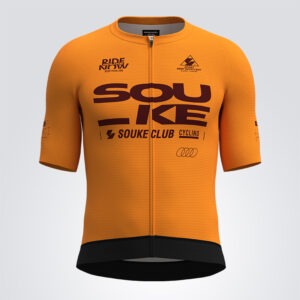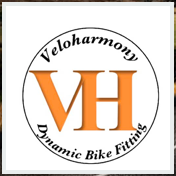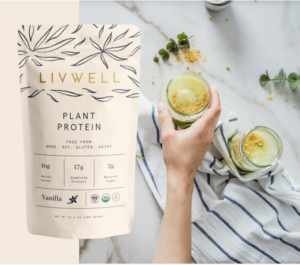Productive Cycling Recuperation 2022
Cycling Recuperation

One of the main differences between amateur and professional riders is not the amount of training they do but their quantity and quality of cycling recuperation. When they are not riding, pros will focus 100% on recovery, knowing that is when their bodies adapt and they become stronger.
For amateurs, with work, family and other commitments, doing nothing is rarely an option. However, if you fail to schedule in enough cycling recovery, you will stop making progress, lose motivation, risk developing overtraining syndrome and possibly expose yourself to increased risk of injury or illness.
All of Veloharmony’s Cycling Training Plans schedule in cycling recuperation and cycling recovery days and regular lower volume recovery weeks and you can further enhance your recovery by following these tips.
Your next workout starts during the current one
The ride you are currently doing can easily impact subsequent rides. Make sure you strictly follow the prescribed intensity of the session and don’t be tempted into thinking that more or harder is necessarily better. Make sure you fuel and hydrate well as, if you exhaust your body’s energy reserves excessively or allow yourself to become dehydrated, you will significantly increase the time necessary to recover from the ride. Always end any ride with at least 10 minutes of easy Zone 1 riding to cool down
Protein is the priority for cycling recuperation
On finishing any ride longer than 90 minutes, the priority is to take on some quality protein and, for this, using some protein powder is probably easiest. You will also need some carbohydrates to replenish your body’s glycogen stores but this can often wait until your post ride meal. Think about when you’re likely to get that meal and, if it’s going to be more than an hour, add some carbohydrates to your recovery drink. Be a bit careful though as it’s easy to end up doubling up on carbs.
Stretch to enhance your cycling recovery
Stretching is important.
“What flexibility work does address is a heightened sensitivity in the muscle to ranges of movement beyond those which you experience when sat on your bike or at your desk. This perceived tightness, if left unaddressed, can easily lead to imbalances, poor muscle function and potentially pain or injury.”
The optimal time to stretch is immediately after you get back from a ride, but get clean and warm first. You will still get benefits in the evening and, if you are more likely to do a good job when relaxed, this is better, rather than a rushed effort straight after riding.
Elevate
The old pro maxim of ‘never stand when you can sit and never sit when you can lie down’ isn’t especially practical or applicable for those of us who have to fit our cycling around work and family. However spending some time elevating your legs after a hard ride can make a difference to recovery by promoting lower body blood flow and preventing pooling. With a pillow behind your head, place your legs up against a wall and aim to stay there for five minutes for every hour ridden.
Compress
Compression clothing is a very popular recovery tool among athletes and, although the research jury is still out, anecdotal evidence is strong and many top riders swear by them. Putting a pair of compression tights on post-training is certainly no hardship. They seem to feel particularly good when you have a long drive after an event or for a lazy Sunday afternoon after a long morning ride. It’s important though that they are tight enough to give a genuine compressive effect, so buy a quality brand and take care with sizing.
Massage
Massage can increase blood flow, correctly align muscle fibres and scar tissue and reduce tightness. A weekly, let alone a daily, massage is beyond most of our budgets but why not try to schedule one in during each recovery week? Look for a qualified sports massage therapist with experience working with cyclists and view it like a regular MOT for your body. A good therapist, as well as treating problematic areas will also be able to flag any potential areas of concern and give you exercises or stretches to address them.
Sleep
Quality sleep equals good cycling recovery. Equally long term poor sleep will result in diminished mental performance and an increase in the body’s stress hormone cortisol. This will impact on both your ability to train and to recover. Poor sleep can be an indicator of non-functional overreaching or overtraining Follow these top five sleep tips
- Don’t train hard less than two hours before sleeping.
- Avoidance/reduction of caffeine, nicotine, and alcohol before bedtime. Drink warm milk as it contains the natural sleepy chemical Tryptohan.
- Associate the bedroom with relaxation, get rid of the TV.
- Keep the bedroom at a well-aired comfortable temperature and make sure it’s properly dark.
- Don’t lie in bed worrying that you cannot sleep. Do not watch the clock, this encourages a stress response. Not everybody needs eight hours, give your body the chance and it will find its own perfect sleep pattern.
Ride
If you have done a hard training ride or event, going out for a cycling recovery ride the next day can enhance the cycling recuperation and recovery process. Ride for 30-60 minutes on a flat course, keep your bike in the smaller chainring and spin easy. Imagine you have got ‘crystal cranks’ that will snap if you put too much pressure through them. Throw in some low gear (39X18) sprints of five-eight seconds duration to help prevent heavy legs. Don’t let your legs burn at all though. If you are using heart rate or power, you should stick strictly to Zone 1. Anything more than this and you will just be adding to your fatigue rather than enhancing recovery.
What about ice baths?
The idea of sitting in a bath of ice after a tough ride, especially during the winter, is hardly an attractive proposition, but fortunately it doesn’t need to be part of your cycling recovery routine. Although ice baths may be beneficial for participants in contact or high impact sports, for cyclists, unless you take a tumble, save the ice cubes for your post-ride recovery smoothie.
Don’t pop a pill
Popping a few pain killers during or after a hard ride to prevent next day soreness may seem like a good idea but you could be doing more harm than good. Studies on the use of painkillers during endurance activities have shown negative effects on digestion, kidney function and an increased risk of hyponatremia (dilution of electrolytes within the body).













